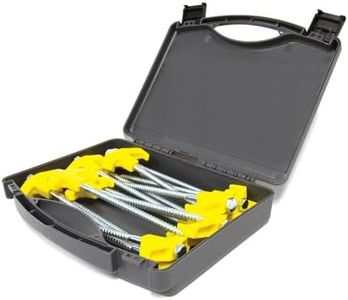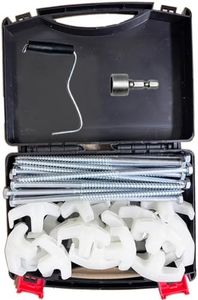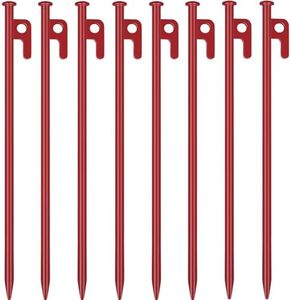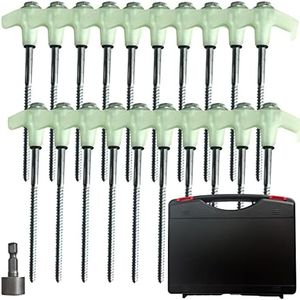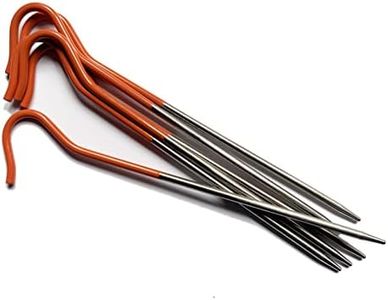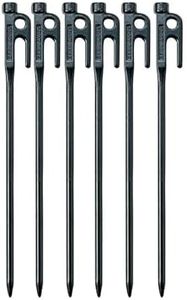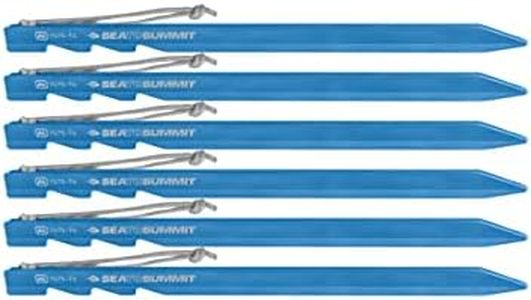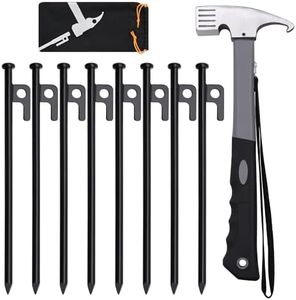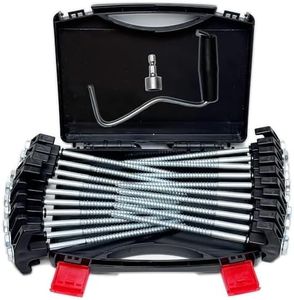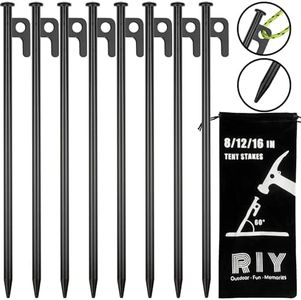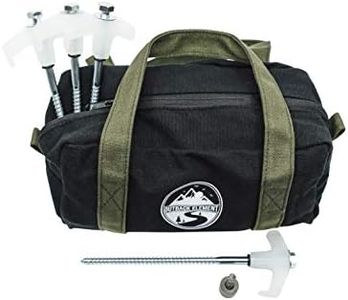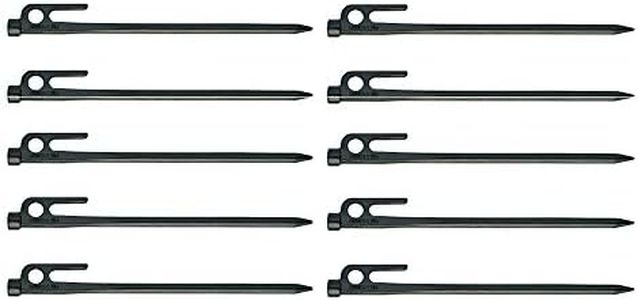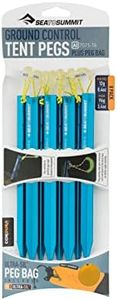We Use CookiesWe use cookies to enhance the security, performance,
functionality and for analytical and promotional activities. By continuing to browse this site you
are agreeing to our privacy policy
10 Best Tent Stakes
From leading brands and best sellers available on the web.Buying Guide for the Best Tent Stakes
Choosing the right tent stakes is important for making sure your tent stays secure and stable, no matter the weather or ground surface. Different types of stakes are better suited for different camping conditions, such as rocky soil, sand, or soft ground. Understanding the materials, lengths, shapes, and special features of tent stakes will help you find the best ones for your camping needs.MaterialThe material of a tent stake affects its strength, durability, and weight. Common materials include aluminum, steel, plastic, and titanium. Aluminum stakes are lightweight and strong, making them a popular all-purpose choice. Steel is heavier but offers maximum strength, which is helpful for hard, rocky ground. Plastic stakes are light and inexpensive, often used for soft ground like sand but can break easier. Titanium stakes are the lightest and extremely strong, ideal for backpackers who want to save weight. Think about where and how you'll be camping to choose the material that suits your needs—if you hike long distances, lighter materials are better, while car campers in rough or rocky areas might want stronger, heavier stakes.
LengthTent stake length determines how deeply the stake can anchor into the ground, affecting stability. Shorter stakes (6 inches or less) are lighter and easier to carry, but may not hold well in loose or soft soil. Medium-length stakes (6-8 inches) strike a good balance for most purposes, while longer stakes (over 8 inches) provide more holding power in soft or sandy ground. If you often camp on soft ground or expect high winds, go for longer stakes. For regular conditions and easy portability, medium-length stakes are generally a safe bet.
ShapeThe shape of a tent stake influences how well it grips the ground and resists being pulled out. Common shapes include straight spikes, Y-shaped, V-shaped, and screw-style stakes. Straight spikes go in easily but may not hold as well in loose soil. Y-shaped and V-shaped stakes have more surface area, giving them better grip in soft ground. Screw-style stakes are designed to twist into sand or loose earth for maximum hold. Choose the shape based on common camping sites: for rocky/hard ground, spikes work well, but for sand or soft soil, Y, V, or screw shapes are much more reliable.
Ease of UseHow easy a stake is to use depends on its design features like pointed tips, large heads, or pull cords. Pointed tips make it easier to push or hammer the stake into hard ground. Large or brightly colored heads make stakes easier to spot and remove, while pull cords or loops give you something to grab onto when packing up. If you want quick setup and takedown, look for these user-friendly features that match your comfort level and camping experience.
WeightThe weight of tent stakes matters, especially for backpackers counting every ounce. Lighter stakes are made from aluminum or titanium, making them ideal for hiking and minimal packing. Heavier steel or specialty stakes hold better in tough conditions, but add more to carry. Consider how much gear you’ll be lugging—if every gram matters, choose the lightest stake that still meets your strength needs. For car camping where weight doesn’t matter as much, heavier but stronger stakes can be a good choice for peace of mind.
Ground CompatibilityNot all stakes work for all types of ground. Some are made specifically for sand, snow, or soft earth, while others are best for rocky, hard-packed ground. Sand and snow stakes are usually wider or screw-like to prevent pulling out, while thin, strong stakes are better for puncturing tough soil. Think about the typical places you camp—matching your stakes to the usual ground conditions will help ensure your tent stays anchored securely.
